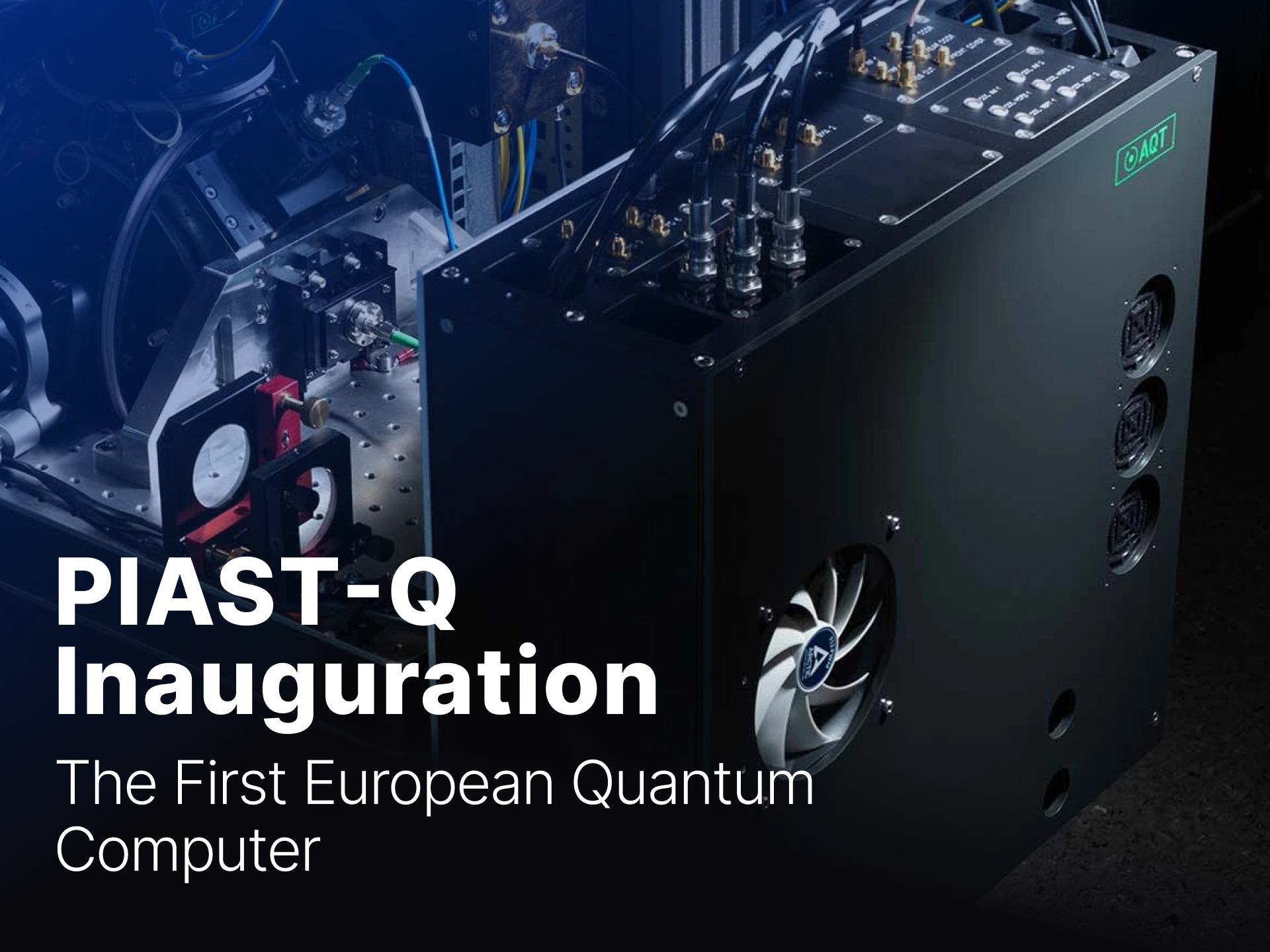On 23 June 2025, Europe celebrated a major milestone in the advancement of its quantum computing capabilities with the official inauguration of PIAST-Q, the first EuroHPC-acquired quantum computer, at the PCSS (Poznańskie Centrum Superkomputerowo-Sieciowe | Poznań Supercomputing and Networking Centre (PCSS|PSNC) in Poland.
This event marks a critical step in building a sovereign, world-class quantum computing ecosystem in Europe, a goal strongly aligned with the Digital Europe Programme. Quantum computing is considered a cornerstone of the EU’s digital sovereignty strategy, enabling Europe to reduce reliance on non-EU technologies while strengthening capabilities in health, security, industry, and the environment.
By investing in infrastructure like PIAST-Q, the EU is promoting innovative research, cross-border collaboration, and high-impact applications, ensuring Europe remains competitive in one of the most transformative technological fields of the 21st century.
What Is Quantum Computing?
Unlike traditional computers, which process information using binary bits (0s and 1s), quantum computers use quantum bits (qubits) that can exist in multiple states simultaneously thanks to quantum phenomena like superposition and entanglement. This allows them to perform certain calculations much faster and more efficiently than classical machines, especially in fields such as molecular simulation, complex optimisation, and machine learning.
What Is PIAST-Q?
PIAST-Q is a laser-based trapped-ion quantum computer developed by Alpine Quantum Technologies (AQT) and hosted at PCSS|PSNC. In this system, individual atoms (ions) are held in place using electromagnetic fields and manipulated with lasers to perform quantum operations. Trapped-ion technology is renowned for its precision (high fidelity) and scalability, making it one of the most promising platforms for building reliable quantum systems.
PIAST-Q currently operates with 20 physical qubits, a modest number by classical standards, but significant in quantum computing. Even a small number of well-controlled qubits can deliver real advantages in tasks such as:
- Quantum optimisation
- Chemistry and molecular simulation
- Materials science
- Machine learning
The system is integrated with the ALTAIR supercomputer, also located at PCSS and ranked among Europe’s most powerful high-performance computing systems (TOP500 list). This integration supports a hybrid quantum-classical environment, where quantum processors tackle tasks best suited to quantum advantage, while classical systems manage large-scale data processing. The setup will later be enhanced with PIAST-AI, further expanding Europe’s computing capabilities across research and industry.
PIAST-Q is expected to be fully operational by the end of 2025, providing services to academic, industrial, and public-sector users across Europe. It is the first in a series of quantum computers to be integrated into the EU's high-performance computing infrastructure under the EuroHPC initiative.
“Today’s inauguration of PIAST-Q is a major step in Europe’s leap into the quantum era. This milestone not only marks the deployment of our first EuroHPC quantum computer, but also demonstrates our commitment to building a world-class, sovereign quantum computing ecosystem in Europe. With PIAST-Q, we are not just investing in technology—we are investing in European excellence.”
Why Does It Matter?
PIAST-Q is more than a technological achievement: it embodies Europe’s ambition for strategic autonomy and leadership in digital innovation. One of the main challenges in quantum computing today lies in executing deep quantum circuits (i.e., long sequences of operations) without errors disrupting the results. Most current systems are limited by short coherence times (how long a qubit retains information) and gate errors, which reduce reliability for complex computations.
Thanks to its high-fidelity gates, long coherence times, and all-to-all qubit connectivity, PIAST-Q can perform more stable and precise quantum computations. These features are crucial for developing real-world applications in fields like chemistry, logistics, AI, and materials development.
This achievement is part of the broader EuroHPC Joint Undertaking (JU) initiative, which is acquiring eight quantum computers across Europe based on different technological architectures. This diversity supports scientific excellence, technology resilience, and accelerated progress in quantum research. Notably, PIAST-Q was delivered months ahead of schedule, highlighting the strong momentum and coordination behind this European effort.
About PCSS|PSNC: A Pillar in Europe's Digital Research Landscape
For over 30 years, the Poznań Supercomputing and Networking Centre (PCSS) has been providing advanced digital infrastructure for science, industry, and society. Its core activities include:
- Digital Science: Facilitating proof-of-concept projects and pilot implementations
- Digital Industry: Developing ICT-based innovations with academic and industrial partners
- Social Innovation: Promoting digital inclusion and public awareness
As the operator of PIAST-Q, PCSS|PSNC is uniquely positioned to offer researchers and innovators access to Europe’s most advanced computing resources, supporting the goals of the Digital Europe Programme and enabling science-driven solutions to global challenges.
Sources used:
- DIGIBYTE (23 June 2025) publication from the European Commission
- Press release (23 June 2025) from the European High-Performance Computing Joint Undertaking (EuroHPC JU)
- PSNC institutional description
- EuroHPC JU Quantum Computers
